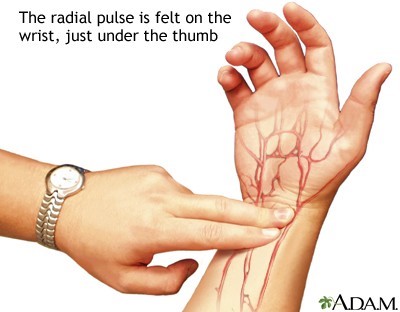A person with type AB blood can successfully receive blood from:
All blood types.
Only type O blood.
Only two of the blood types.
Only one of the blood types.
The Correct Answer is A
A person with type AB blood can successfully receive blood from all blood types.
This is because type AB blood has both A and B antigens on the surface of red blood cells, and therefore does not have antibodies against either antigen in the plasma.
Type AB blood is also called the universal recipient.
Choice B is wrong because type AB blood can receive more than just type O blood.
Type O blood is the universal donor, meaning it can be given to anyone, regardless of their blood type.
Choice C is wrong because type AB blood can receive more than just two of the blood types. Type AB blood can receive both A and B blood, as well as O and AB blood.
Choice D is wrong because type AB blood can receive more than just one of the blood types. Type AB blood can receive any blood type without problems.
Normal ranges for blood types vary by population, but generally, type O is the most common, followed by type A, type B, and type AB.
Nursing Test Bank
Naxlex Comprehensive Predictor Exams
Related Questions
Correct Answer is A
Explanation

The radial artery is one of the major blood-supplying vessels to the forearm and hand.
It can be felt as a pulse near the thumb on the wrist by gently pressing the artery against the underlying bone.
This is the most commonly measured pulse by nurses to assess peripheral pulse characteristics.
Choice B.
Palmar arch arteries are wrong because these are branches of the radial and ulnar arteries that form anastomosis in the palm of the hand.
They are not palpable on the wrist.
Choice C.
The brachial artery is wrong because this is the main artery of the upper arm that bifurcates into the radial and ulnar arteries at the cubital fossa.
It can be felt as a pulse in the antecubital fossa, not near the thumb on the wrist.
Choice D
The Ulnar artery is wrong because this is another major blood-supplying vessel to the forearm and hand that runs along the medial aspect of the forearm.
It can be felt as a pulse on the little finger side of the wrist, not near the thumb.
Correct Answer is B
Explanation
Kidney disease can cause hypertension by activating the renin-angiotensin mechanism.
This mechanism involves the release of renin from the kidneys, which stimulates the production of angiotensin II, a hormone that constricts blood vessels and increases blood pressure.
Choice A is wrong because kidney disease does not directly signal the brain stem to increase blood pressure.
The brain stem regulates blood pressure through the autonomic nervous system, which responds to various stimuli such as stress, pain, or emotions.
Choice C is wrong because kidney disease does not increase the release (excretion) of sodium and water.
On the contrary, kidney disease can impair the ability of the kidneys to filter out excess sodium and water, which can lead to fluid retention and increased blood pressure.
Choice D is wrong because kidney disease does not stimulate the secretion of ANP.
ANP stands for atrial natriuretic peptide, a hormone that is secreted by the heart when it senses high blood pressure.
ANP causes the kidneys to excrete more sodium and water, which lowers blood pressure.
Whether you are a student looking to ace your exams or a practicing nurse seeking to enhance your expertise , our nursing education contents will empower you with the confidence and competence to make a difference in the lives of patients and become a respected leader in the healthcare field.
Visit Naxlex, invest in your future and unlock endless possibilities with our unparalleled nursing education contents today
Report Wrong Answer on the Current Question
Do you disagree with the answer? If yes, what is your expected answer? Explain.
Kindly be descriptive with the issue you are facing.
